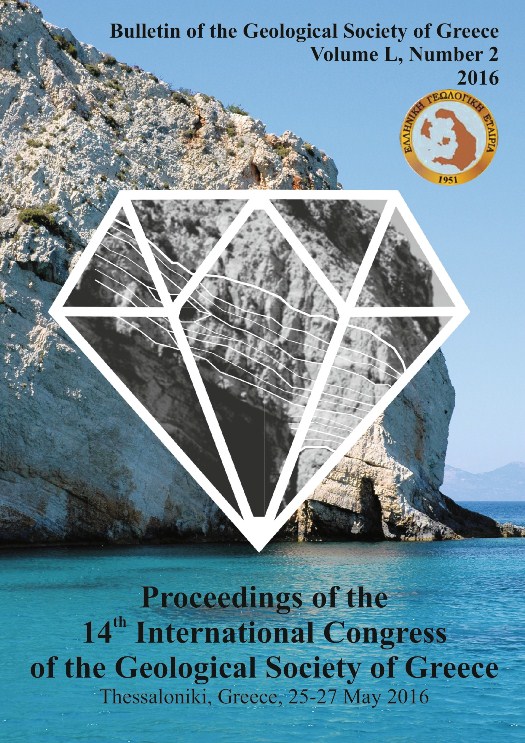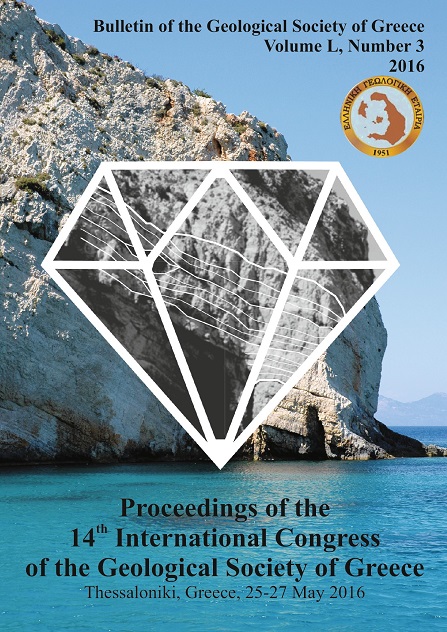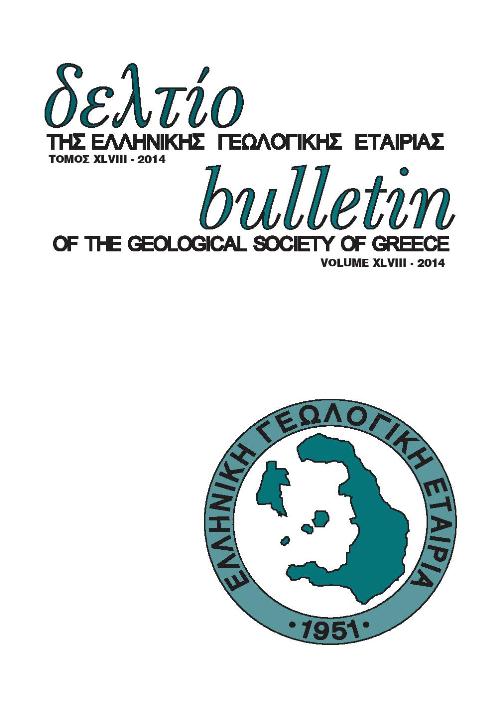KINEMATIC ANALYSIS EVOLUTION OF EXTENDED LANDSLIDES: TWO CASE STUDIES FROM WESTERN GREECE

Περίληψη
Οι κατολισθήσεις αποτελούν τον πιο συχνό κίνδυνο στην Δυτική Ελλάδα, μαζί με τους σεισμούς και τις πυρκαγιές. Έχουν πραγματοποιηθεί πολλές μελέτες με σκοπό την μελέτη των φαινομένων καθώς επίσης και καταγραφή τους σε χάρτες. Στην παρούσα εργασία αναλύονται δύο από τις πλέον καλά μελετημένες κατολισθήσεις ως προς την εξέλιξή τους. Οι κατολισθήσεις της Παναγοπούλας και της Καρυάς αποτελούν δύο αντιπροσωπευτικές θέσεις μακράς παρακολούθησης μέσω αποκλισιομετρικών μετρήσεων. Ο παράγοντας εναύσματος και στις δύο περιπτώσεις είναι οι έντονες βροχοπτώσεις. Η κύρια τεχνικογεωλογική ενότητα που σχετίζεται με αυτές είναι ο σχηματισμός του φλύσχη. Οι αποκλισιομετρικές μετρήσεις για ένα μεγάλο χρονικό διάστημα αναλύονται και σχεδιάζονται τυπικά διαγράμματα μετακινήσεων. Γίνεται χρήση ενός απλού στατιστικού μοντέλου που περιλαμβάνει κανονικοποίηση των δεδομένων κατά τη διάρκεια συγκεκριμένων φάσεων μετακίνησης με βασικό σκοπό να αναγνωριστούν τα κινηματικά χαρακτηριστικά της μετακίνησης και να εκτιμηθούν οι επικρατούσες ταχύτητες.
Λεπτομέρειες άρθρου
- Πώς να δημιουργήσετε Αναφορές
-
Kavoura, K., Anagnostopoulou, S., Servou, K., Depoundis, N., Nikolakopoulos, K., & Sabatakakis, N. (2016). KINEMATIC ANALYSIS EVOLUTION OF EXTENDED LANDSLIDES: TWO CASE STUDIES FROM WESTERN GREECE. Δελτίο της Ελληνικής Γεωλογικής Εταιρείας, 50(2), 730–739. https://doi.org/10.12681/bgsg.11779
- Ενότητα
- Engineering Geology, Hydrogeology, Urban Geology

Αυτή η εργασία είναι αδειοδοτημένη υπό το CC Αναφορά Δημιουργού – Μη Εμπορική Χρήση 4.0.
Οι συγγραφείς θα πρέπει να είναι σύμφωνοι με τα παρακάτω: Οι συγγραφείς των άρθρων που δημοσιεύονται στο περιοδικό διατηρούν τα δικαιώματα πνευματικής ιδιοκτησίας επί των άρθρων τους, δίνοντας στο περιοδικό το δικαίωμα της πρώτης δημοσίευσης. Άρθρα που δημοσιεύονται στο περιοδικό διατίθενται με άδεια Creative Commons 4.0 Non Commercial και σύμφωνα με την οποία μπορούν να χρησιμοποιούνται ελεύθερα, με αναφορά στο/στη συγγραφέα και στην πρώτη δημοσίευση για μη κερδοσκοπικούς σκοπούς. Οι συγγραφείς μπορούν να: Μοιραστούν — αντιγράψουν και αναδιανέμουν το υλικό με κάθε μέσο και τρόπο, Προσαρμόσουν — αναμείξουν, τροποποιήσουν και δημιουργήσουν πάνω στο υλικό.







